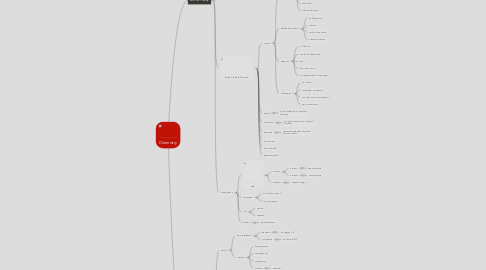
1. Atomic Theory
1.1. Scientists
1.1.1. Democritus
1.1.1.1. 400 BCE
1.1.1.2. indivisible particle
1.1.1.3. different sizes
1.1.1.4. in constant motion
1.1.2. Aristole
1.1.2.1. 450 BCE
1.1.2.2. 4 basic substances
1.1.2.2.1. wind
1.1.2.2.2. water
1.1.2.2.3. earth
1.1.2.2.4. fire
1.1.2.3. 4 qualities
1.1.2.3.1. dry
1.1.2.3.2. wet
1.1.2.3.3. hot
1.1.2.3.4. cold
1.1.3. John Dalton
1.1.3.1. 1807
1.1.3.2. billiard ball model
1.1.3.3. discovered the atom
1.1.3.4. atoms are never destroyed or created
1.1.4. J.J. Thomson
1.1.4.1. 1897
1.1.4.2. plum pudding model
1.1.4.3. discovered the electron
1.1.5. Niel Bohr
1.1.5.1. 1913
1.1.5.2. electron orbit/ shell
1.1.6. Ernest Rutherford
1.1.6.1. 1909 and 1920
1.1.6.2. discovered the nucleus and proton
1.1.6.3. solid core
1.1.7. James Chadwick
1.1.7.1. 1932
1.1.7.2. discovered the neutron
1.1.7.3. equal number of electrons and protons (in an atom)
1.2. Periodic Table of Elements
1.2.1. groups
1.2.1.1. alkali metals
1.2.1.1.1. ex. Lithium
1.2.1.1.2. very reactive
1.2.1.1.3. solid at room temp
1.2.1.1.4. soft metals
1.2.1.1.5. silver and lustrous
1.2.1.2. alkaline earth metals
1.2.1.2.1. ex. Magnesium
1.2.1.2.2. reactive
1.2.1.2.3. solid at room temp
1.2.1.2.4. silver and lustrous
1.2.1.3. halogens
1.2.1.3.1. ex. Chlorine
1.2.1.3.2. usually not found alone
1.2.1.3.3. salts
1.2.1.3.4. toxic in pure form
1.2.1.3.5. no particular state at room temp
1.2.1.4. noble gases
1.2.1.4.1. ex. Helium
1.2.1.4.2. very stable, non-reactive
1.2.1.4.3. naturally found as compounds
1.2.1.4.4. gas at room temp
1.2.2. metals
1.2.2.1. good conductors of heat and electricity
1.2.3. non-metals
1.2.3.1. not good conductors of heat and electricity
1.2.4. metaloids
1.2.4.1. shares characteristics of metals and non-metals
1.2.5. atomic mass
1.2.6. atomic number
1.2.7. element symbol
1.3. Compositions
1.3.1. atom
1.3.1.1. nucleus
1.3.1.1.1. protons
1.3.1.1.2. neutrons
1.3.1.2. electrons
1.3.1.2.1. negative charge
1.3.2. compound
1.3.2.1. molecular compund
1.3.2.2. ionic compound
1.3.3. ion
1.3.3.1. positive
1.3.3.2. negative
1.3.4. element
1.3.4.1. pure substances
2. Particle Theory
2.1. matter
2.1.1. pure substances
2.1.1.1. elements
2.1.1.1.1. ex. Oxygen (O)
2.1.1.2. compounds
2.1.1.2.1. ex. Water (H2O)
2.1.2. mixtures
2.1.2.1. heterogeneous
2.1.2.2. homogeneous
2.1.2.3. suspensions
2.1.2.4. colloids
2.1.2.4.1. emulsions
2.2. state of matter
2.2.1. solid
2.2.1.1. ex. ice
2.2.2. liquid
2.2.2.1. ex. water
2.2.3. gas
2.2.3.1. ex. water vapor
2.3. properties
2.3.1. physical
2.3.1.1. colour
2.3.1.2. densitty
2.3.1.2.1. density=mass/volume
2.3.1.3. mass
2.3.1.4. solubility
2.3.1.5. optical clarity
2.3.1.6. lustre
2.3.1.7. malleability
2.3.1.8. ductility
2.3.1.9. hardness
2.3.1.10. brittleness
2.3.1.11. evaporation point
2.3.1.12. magnetism
2.3.1.13. odour
2.3.1.14. conductivity
2.3.2. chemical
2.3.2.1. resistant to cleaning solutions
2.3.2.2. ability to burn
2.3.2.3. breaks down rust
2.3.2.4. produces new colours
2.3.2.5. produces new gas when mixed with...
2.4. changes
2.4.1. physcial
2.4.1.1. change of size
2.4.1.2. change of shape
2.4.1.3. dissolving
2.4.1.4. change of state
2.4.2. chemical
2.4.2.1. colour change
2.4.2.2. gas production
2.4.2.3. odour change
2.4.2.4. precipitate formed
2.4.2.5. energy change (temperature)
